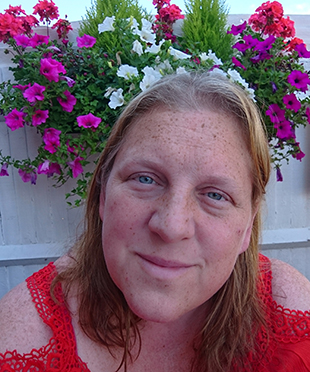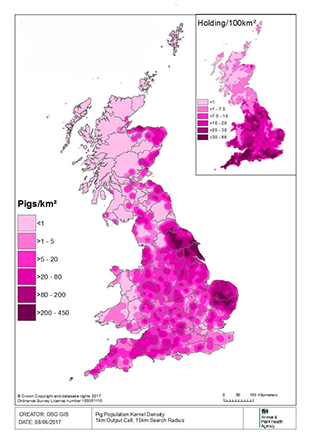Maps of livestock populations across Great Britain produced by APHA’s Livestock Demographic Data Groups (LDDGs) have been externally published for the first time. Jane Tennant, from APHA's Science, Strategy & Planning team, talks about their relevance and current work being done by the LDDG groups.
What are the LDDGs?

APHA’s Livestock Demographic Data Groups were formed in 2014 for cattle, sheep, goats, pigs and poultry, to look at making knowledge of population data more reliable and robust. Each group includes epidemiological, data analytical and geographical information system expertise, alongside a species expert, with coordination, oversight and policy liaison with Defra from a data coordinator, and by me as a scientific project manager. This work provides Defra, Welsh Government and Scottish Government with expertise and evidence to enhance surveillance, facilitate and improve outbreak response, and inform policy development.
How do we visualise livestock?
Maps are an easy way to visualise livestock population data and assess geographical differences. The new LDDG population maps for 2016/17 for cattle, sheep, goats, poultry and pigs, that we have now made available on APHA’s surveillance and diagnostic webpages, allow farmers and vets to view regional populations of these livestock species.
These annual population reports, which were previously only shared internally within Defra and the Welsh and Scottish Governments, estimate the distribution and size of the animal populations and holdings across Great Britain, from the best available information. They can help inform animal health and welfare policy as well as support contingency and resource planning, and could provide evidence to trading partners. Knowing the distribution of different livestock species in the country and their densities in different regions, is also useful during disease outbreaks, for example to identify the relative density of susceptible animals in a certain area.
Why is livestock data important?

Livestock population data is important in all sectors and at all levels of farming, as recently highlighted on BBC’s Countryfile, which looked at backyard and small holder population data for both pigs and poultry, an area we have been actively working on recently with industry partners.
For poultry, the LDDG has been working with industry to improve the data available for small and backyard flocks as although some choose to register their birds voluntarily there is no legal requirement for people who keep less than 50 birds to register their holding. The group has been working with data gained from foot patrols that were carried out during recent avian influenza outbreaks. Veterinary investigators knocked door-to-door to find out if anyone kept poultry in their garden. This data gave very detailed accurate information on the small flock and backyard poultry populations in the areas around infected premises, and this has been used by the poultry LDDG to improve confidence in our data and establish estimates for the overall population of poultry in the UK.
The pig LDDG has also liaised with the pig industry, and recent maps (similar to one pictured right) used reported pig movements as a new data source. This greatly improved our ability to identify premises with smaller numbers of pigs as well as larger commercial farms. Click on the map to read the latest pig population report.
In the future, there are plans for the LDDGs to develop these maps further to show population information interactively online, with more detail.
If you would like more information about the population data used to make these maps or for more information on the work of the LDDGs, please contact us via the LDDG mailbox.
Follow APHA on Twitter and don't forget to sign up to email alerts.

Recent Comments